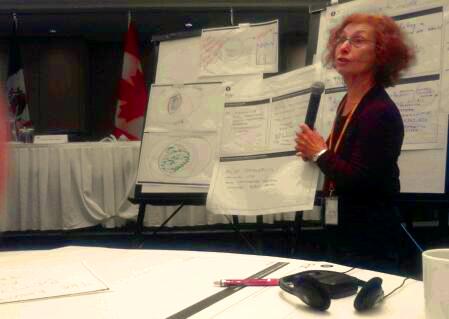By Talli Nauman*
It was not until the last day of the six-year term of office of former President Felipe Calderon that the Mexican Government finally responded to 18 years of pressure from citizens to establish the Pollutant Release and Transfer Register
(PRTR). On December 4, 2012, the Official Gazette of the Federation published the Mexican Official Standard No. 165 (NOM 165) that established a list of toxic substances required to be reported in every industrial establishment where they are generated as part of the production process.
The document was the legal instrument for applying the PRTR rule approved in 2004.
The obligation of industries to annually divulge the quantities of each chemical that they emit, subject to a fine, was supposed to go into effect after consideration of public input during the 60-day comment period following the publication of the list.
While the announcement was a sign of hope, it was also a reminder of how much those sectors involved in improving the health of the environment have had to fight over a total of four six-year presidential terms in order to achieve a PRTR in Mexico.
The United States initiated its version of the PRTR in response to public anger generated by the secret discharges of gases from a Union Carbide pesticide factory in Bhopal in 1984 that killed about 20,000 people. Canada followed with the passage of their own version in 1992.
In Mexico in 2001, various organizations achieved reform of the General Law of Environmental Equilibrium and Protection that mandated the Environmental and Natural Resources Secretariat (SEMARNAT) to establish a PRTR.
The CEC has driven the improvement of the PRTR’s, providing a forum for discussion between sectors during the annual public consultation meetings Registers. It was because of the meeting on October 30-31, 2012, that the message from the NGOs was able to influence the new PRTR list, just as the administration’s six-year term ended.
In a joint statement released at the meeting held in Toronto, the crossborder proponents of the PRTRs emphasized that during five years of Calderon's six-year term, the regulations were snared in red tape at the Cabinet level, labeling it “bureaucratic foot dragging on the environment.”
Asociación Ecológica Santo Tomás, Journalism to Raise Environmental Awareness,
CIP Americas Program,
Greenpeace México, and
Fronteras Comunes were the organizations participating in the declaration of their “most energetic rejection of the way the Mexican government has conducted itself in this matter.”
After reviewing the publication of the list, Azucena Franco of
Fronteras Comunes commented, “Of course, we can’t proclaim a victory and that from now on everything will be transparent, the emissions will be accounted for, and that the list will continue to increase, but it is big news that by law, they do have to report."
The U.S. version of the inventory covers 600 substances, that of Canada has 300. Mexico starts with 200. According to the CEC, there are now 57 substances common to the three countries.
Although the number in Mexico is small, the NGOs in the work group convened by SEMARNAT to make the list determined that a slow start was better than none at all, a real threat from the corporate representatives in the group who are opposed to the project.
NGOs at Toronto pointed out that the preparation period for the new list of substances “has transpired within a slow, bureaucratic framework disguised as transparency, where the opinions of both civil society, as expressed via the participating NGOs in the NOM 165 Working Group, and academic participants, have not had sufficient representation due the united front posed by the industrial and governmental sectors which oppose the plan.”
The established registers are constantly being revised and augmented in northern industrial countries that were the first in employing this tool to assure that “what is measured, is managed” and that polluters pay.
The registers now are being instituted around the world, with the Organization for Economic Cooperation and Development , as well as U.N. agencies supporting the incorporation of developing countries.
*Co-director, Journalism to Raise Environmental Awareness
Thus, Mexico became the first Latin American country to set a legal foundation for this tool, a key to assuring public access to environmental information. However, the country was still far from enforcing the law.
Voluntary substance reporting began on April 1, 2005, with the publication of a provisional list of 104 substances. This became obsolete on April 1, 2007, leaving the public registry of toxic substances without legal support ever since, showing it to be useless in spite of all its intentions, including those of crossborder comparability proposed by the Commission for Environmental Cooperation (CEC) of North America.
 Anna Tilman, representantive for Canadian NGOs participated in the annual trinational meeting on PRTRs in 2012 (Photo: Talli Nauman)
Anna Tilman, representantive for Canadian NGOs participated in the annual trinational meeting on PRTRs in 2012 (Photo: Talli Nauman) Anna Tilman, representantive for Canadian NGOs participated in the annual trinational meeting on PRTRs in 2012 (Photo: Talli Nauman)
Anna Tilman, representantive for Canadian NGOs participated in the annual trinational meeting on PRTRs in 2012 (Photo: Talli Nauman)